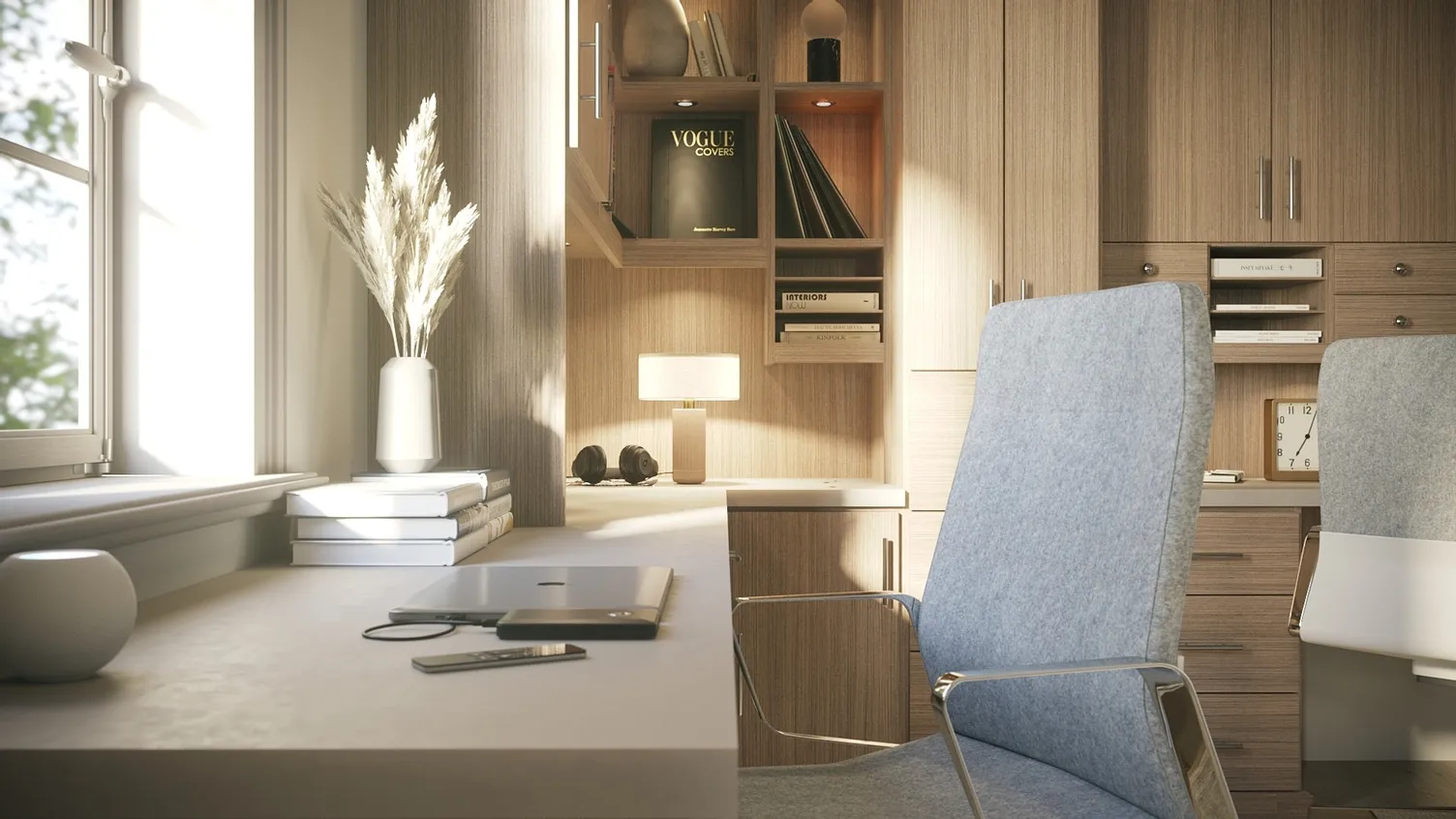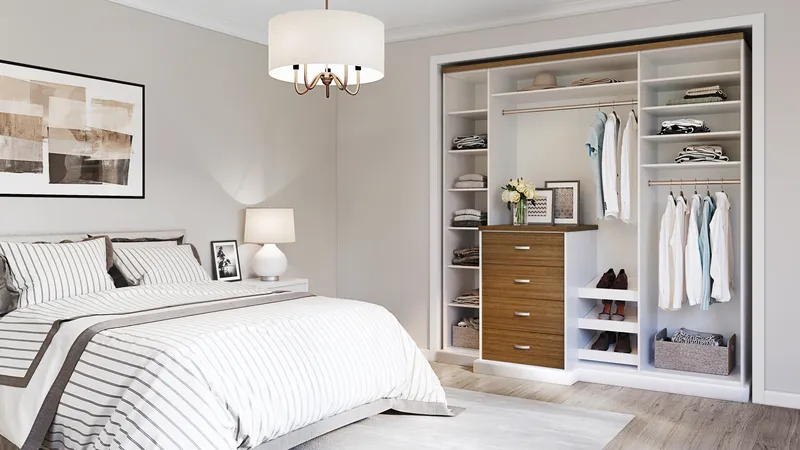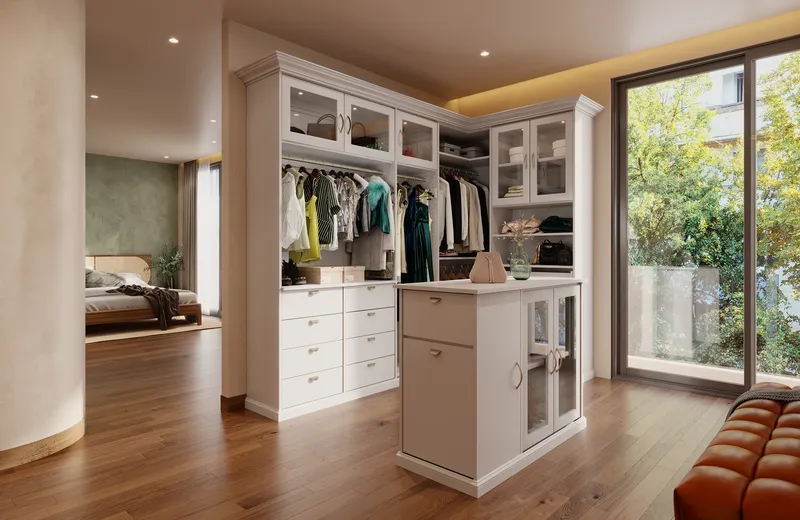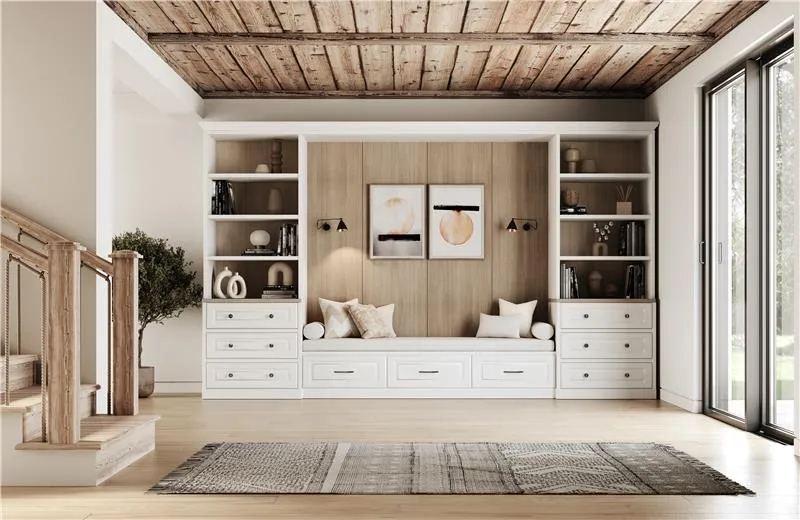Knowing the numbers in your closets can be the difference between a cluttered mess and an organized oasis.
Whether you're a homeowner planning a renovation or a designer crafting the perfect space, understanding standard closet dimensions can ensure you’re optimizing your closet for success.
Why Closet Dimensions Matter
Closets are an essential part of our homes, keeping our living spaces organized and clutter-free. By knowing the standard closet dimensions of different closet types, you can make informed decisions that optimize every inch of your space!
Closet Types
When it comes to closets, one size definitely does not fit all. There are mainly three types of closets: reach-in, walk-in, and wardrobe.
Each has different standard closet dimensions and serves different needs and spaces. Choosing the right one can significantly affect how you organize and use your space.

Reach-In Closets
Reach-in closets are the most common closets and generally have the smallest standard bedroom closet dimensions.
Reach-in closets are typically about 24 inches deep, allowing for comfortable storage without clothes brushing against the back wall. These closets come in various widths, from 36 to 96 inches.
Reach-in closets are great for spaces like children's rooms or guest bedrooms where space is limited. You can customize them with things like:
- Double hanging rods for more storage
- Adjustable shelving for flexible organization
- Drawers for keeping smaller items looking and feeling neat
While most come with standard closet door dimensions, a single hanging rod, and a couple of shelves, partnering with a custom closet organizer to install things like sliding doors, drawers or shoe racks can make them even more functional and organized.
Walk-In Closets
Many people dream of having a walk-in closet, and we don’t blame them! They’re luxurious and easy to move in and out of.
To be considered a walk-in closet dimensions standard, the closet should be at least 36 inches deep, allowing you to enter and walk around within the space. A standard size is typically around 6.5 feet by 10 feet, providing ample room to get dressed.
A well-designed walk-in closet often includes areas for hanging garments, drawers, shelves, and sometimes even a seating area for dressing.
Use the space to incorporate elements like an island drawer unit for accessories, varied rod heights for different types of clothing, and open shelving for shoes and purses.
Good lighting and mirrors can also enhance the functionality and feel of a walk-in closet, making dressing a breeze.

Wardrobe Closets
Not every home has built-in closet space — which is where wardrobes come in. These freestanding units are versatile and can be moved around as you need to.
Closet standard dimensions for wardrobe closets are about 24 inches deep and can range from 30 inches to 60 inches wide, with heights typically around 72 inches.
Wardrobes are great because you can move them from room to room (and house to house) as you need them, always keeping the storage space consistent.
They can also include features like adjustable shelves, built-in drawers, and hanging rods, making them as functional as any built-in closet.
By understanding these standard closet dimensions and types, you can better plan your space, ensuring that every inch works hard to make your life organized and stylish.
Dimensional Details
When planning your dream closet, the devil is in the details—specifically, the dimensions of each closet component.
If a closet is too shallow, clothes will be cramped and may wrinkle or get damaged.
If it's too deep, you risk creating unreachable areas that waste valuable storage space.
The right depth allows clothes to hang freely, and the right width and height make it easy to reach items and store them properly.

Depth Measurements
When planning your closet, remember that the standard depth for hanging clothes is around 24 inches. This depth ensures that your clothes don't touch the back wall, helping to prevent wrinkles and allowing air to flow around them.
For bulkier items like coats or fancy dresses, you might need deeper sections. In these cases, extending the depth to 28 or even 30 inches can provide the extra space needed to keep your clothes comfortable and well-maintained without getting cramped or damaged.
Width and Height Standards
When designing your closet, it's also essential to consider the width and height standards to meet your storage needs effectively.
Typically, for a single rod setup, you’ll want a width of at least 48 inches is standard, providing enough space for hanging shirts, pants, and dresses.
If you opt for double rods, where one is above the other, each section can be narrower — around 36 inches wide — to make the most of vertical space.
Heights in closets vary based on the items stored; for instance, the top shelf should be around 84 inches from the floor, suitable for storing boxes or seldom-used items.
Lower storage, like drawers for accessories, can be around 42 inches high, offering easy access while still leaving room for hanging clothes above. By understanding these dimensions — depth, width, and height — you can create a closet that not only looks good but also functions beautifully, keeping your garments and accessories organized and accessible.

Space Planning Tips
Considering Clearance and Accessibility
For your closet to work well, it's important to have enough space for doors and drawers to open easily.
Make sure there's at least 24 inches of room in front of sliding doors and 36 inches for doors that swing open. This gives you plenty of space to move and access your clothes and belongings without any trouble.
Accessibility is also really important in closet design. Install rods and shelves at different heights so everyone can reach them comfortably. Lower rods are great for kids, and shelves that are easy to reach are helpful for people in wheelchairs.
You can even use pull-down rods to make reaching clothes higher up easier for everyone. Making sure your closet is set up with enough space and accessibility features will make using it a breeze for everyone in your home.
Layout Configurations
Your layout is super important to make the most of the space and make it easy to use. Popular layouts include the "U" shape, which wraps around you on three sides, and the "L" shape, which fits snugly into corners
If your closet is smaller, a straight layout with different levels for hanging clothes can work well. Think about your lifestyle now — what types of clothes do you wear?
If you have lots of long dresses or coats, make sure there's plenty of space for full-length hanging. And if you're a shoe lover, add more shelves or special organizers just for your shoes.

Visual Cohesiveness
When designing your closet, it's not just about function—it's about making it look good too. Make sure the design fits with the style of your room.
If your room is modern and simple, a sleek, minimalist closet will fit right in. And if you like a vintage feel, add those elements to your closet, too.
ClosetWorld Will Curate Your Perfect Custom Closet!
Whether you're looking for a luxurious walk-in closet with all the bells and whistles or just a neatly organized reach-in, ClosetWorld can design something that perfectly matches your space and style.
Book your free in-home consultation to create a closet that not only stores your belongings but also enhances your home and lifestyle!










